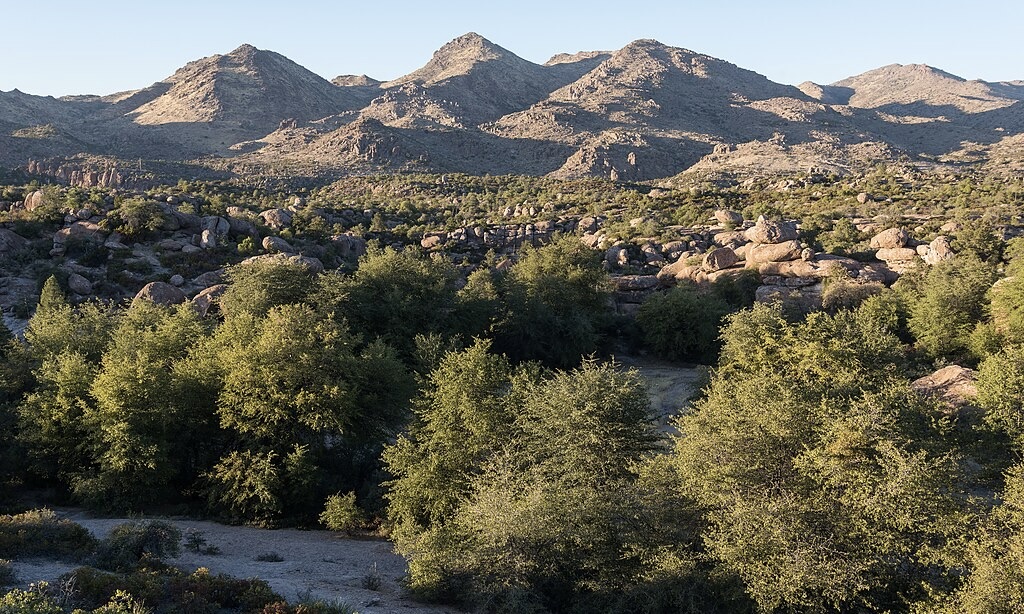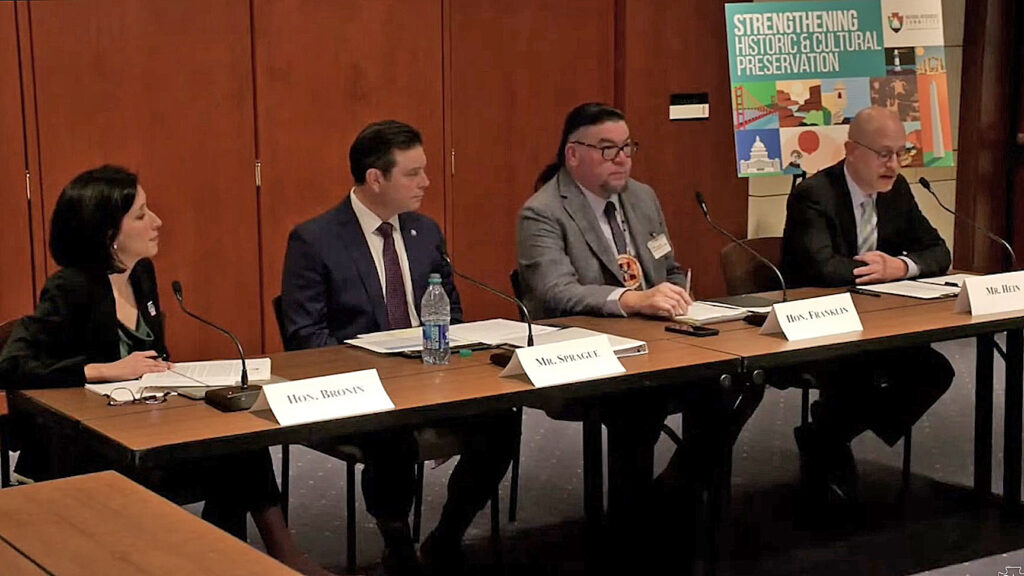A congressional roundtable convened by Arizona Rep. Raúl Grijalva proposed legislation to create a Climate Heritage Office and called for more direct support for tribal historic preservation offices.
By Melanie Lenart

Inadequate federal funding is jeopardizing the ability of tribal nations to protect historic structures and sacred sites in a changing climate, according to a congressional roundtable on Strengthening Historic and Cultural Preservation held last week. Speakers also criticized the federal government’s willingness to sacrifice sacred lands to mining ventures.
Rep. Raúl Grijalva, whose Arizona congressional district includes the Tohono O’odham, Pascua Yaqui, Cocopah and Quechan tribal nations, called for the roundtable as the ranking member of the House Natural Resources Committee. As a minority Democrat in the House, he and his colleagues could not convene a hearing.
Grijalva noted that Congress has not yet authorized funding for the Historic Preservation Fund. A stop-gap measure allows the tribal officers, Advisory Council on Historic Preservation and other employees dependent on the fund to continue working. He assured participants and listeners that President Biden has vowed to veto any bills proposed to bypass consideration of the effects on historic properties of any federally funded projects.
Sara Bronin, chairwoman of the Advisory Council, said the 23-member council generally opposes any exemptions to their oversight as the federal agency that oversees preservation efforts. She also requested legislation for additional funding to address threats posed by climate change to historic structures.
“Consider the Statue of Liberty, closed for eight months following Superstorm Sandy. Or the Alaskan Native town of Newtok, entirely relocated due to sea level rise. Or Lahaina, in Hawaii, decimated by wildfire,” Bronin said. “Contemporary conversations about climate change often overlook how it is already disrupting our connections to our past and our cultural heritage.”
To make historic properties less vulnerable to climate change, Bronin requested three things:
- Legislation to create a US Climate Heritage Office within the Advisory Council to help make vulnerable historic properties more resilient to disaster and safely convert some to renewable energy sources.
- Funding for research on historic resources in the context of climate change. The research could help adapt historic structures to the floods and fires that have become more frequent as the climate heats up. Research on Indigenous Knowledge and practices could also inform climate resilience strategies.
- Funding to digitize information about the nation’s heritage, such as locations of historic structures. While tribal nations might choose to exclude some of their properties of religious and cultural significance from a database, she said, a digital map of most known sites could help the council determine which sites are most at risk from sea level rise and other climate change effects.
Other panelists supported creating a permanent allocation for the Historic Preservation Fund. Among other things, the fund supports Advisory Council activities and reviews to provide tax credits for historic structures, and also covers salaries of the country’s hundreds of Tribal Historic Preservation Officers and State Historic Preservation Officers—called THPOs and SHPOs (and pronounced “thippos” and “shippos.”)
“Lack of funding for SHPOS and THPOS, and bypassing public participation, are not worthy cost-savings and efficiency measures,” said Erik Hein, executive director of the National Conference of State Historic Preservation Officers. “They run counter to the National Historic Preservation Act and make projects vulnerable to more delays from surprise discoveries, legal challenges and public opposition.”

Congress authorized spending $150 million a year when establishing the fund back in 1977, but the Historic Preservation Fund never received the full amount until 2022, said panelist Shaw Sprague of the National Trust for Historic Preservation. He lauded House of Representatives bill 3350, which would authorize $250 million in funding annually for the next decade.
Advisory Council member Reno Keoni Franklin, chairman of the Kashia Band of Pomo Indians of the Stewarts Point Rancheria and a member of the National Association of Tribal Historic Preservation Officers, agreed more funding was needed to help support the many activities required of the 210 preservation officers working in Indian Country.
“Our sacred sites are non-renewable resources,” Franklin said. “Once those get wiped out, it’s not like you can rebuild that.”
Franklin reminded the group that the federal government only began appointing tribal historic preservation officers in the 1990s. Before then, the National Historic Preservation Act did not allow tribal nations to manage their own sacred sites.
“Once THPOs came into effect and we began to manage our own resources, you can see a real clear change in the way that historic preservation was done in Indian Country.”
Franklin requested that the committee improve the hiring requirements for tribal members to become preservation officers, which he called “very complicated and in its form that it currently sits in, extremely insulting to tribes.”
The Biden administration has made strides by requiring federal agencies to create policy incorporating respect for Indigenous Knowledge, he said. Franklin said the Advisory Council held 13 consultations about this with American Indian Tribes, Alaska Natives and federal agencies, and that its policy statement would be coming soon.
However, he pointed out that the administration’s “actions have not always matched their lofty words.”
As an example, he cited the administration’s willingness to allow an Australian-British company to turn sacred land inside the Tonto National Forest east of Phoenix into a crater the size of the Eiffel Tower to mine the copper below it. The non-profit Apache Stronghold group sued to protect the sacred site, known as Oak Flat, or Chíchʼil Bił Dagoteel by the Western Apache and Chéchʼil Bił Dahoteel by the Navajo Nation. The case currently is winding through federal court system.
Franklin commended Grijalva for his 2021 effort to pass legislation to protect Oak Flat, and asked that the House Natural Resources committee use existing laws or create new laws to protect sacred sites and tribal nations’ cultural resources.
“There should be no question about whether it is right or wrong for the federal government to transfer Forest Service land to a mining company that plans to develop a copper mine and destroy a site that is sacred to Tribal Nations,” Franklin stated.
A video of the two-hour Strengthening Historic and Cultural Preservation roundtable is available for public viewing here, and written statements supporting the panel presentations are available here.
• • •
Melanie Lenart is Native Science Report’s contributing editor.
Story published December 6, 2023
• • •
Enjoyed this story? Enter your email to receive notifications.
